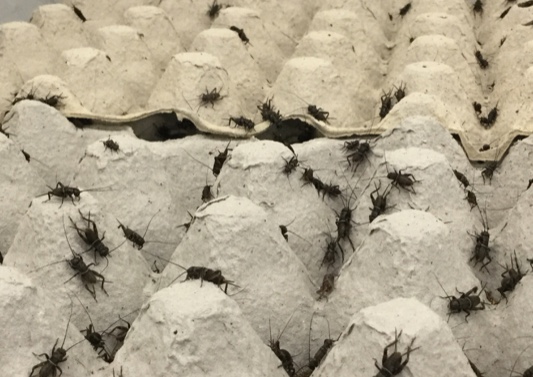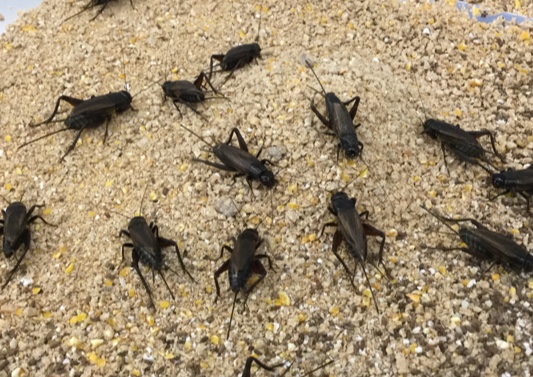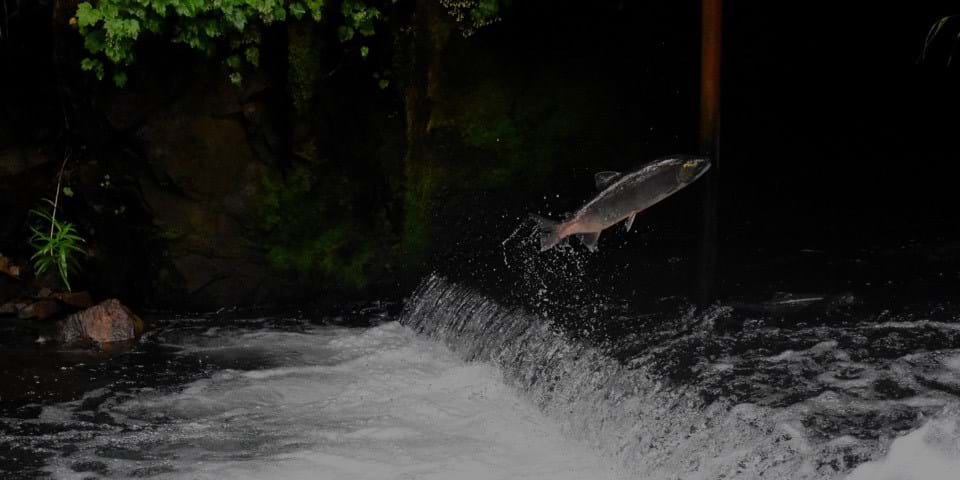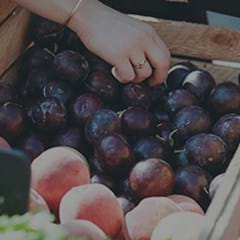On a balmy summer night, what's lovelier than the gentle chirruping of crickets? That may not just be the sound of summer. It may be the sound of the food that could save us all.
The humble cricket offers an outstanding nutrition package. If you really had to, you could probably live on those little guys and nothing else: they’re loaded in protein, low in carbs, they have all the essential amino acids for human life.
“Cricket protein has got all the essential amino acids. It's very high in vitamin B and it's also got a good amount of omega 3 and 6.”
If the idea of eating that sort of thing weirds you out, here's good news from the world of food product development. By the time your cricket has been dried, toasted and processed and turned into some sort of delicious product, you’d only know it was in there from reading the label.
We’ll come back in a moment to the fine-dining aspect. First let’s consider the larger question of the fate of the planet. Feeding the world’s seven-going-on-nine billion people, particularly in the form of meat, calls for vast amounts of energy and water. We face the very real prospect of running short and/or causing irreversible greenhouse gas emission damage if we keep producing food the way we are.
Some food producers see the solution in the insect world. Talk for just a few minutes with John Hart, a farmer/technologist with New Zealand baker BreadCraft and you'll be sold.
This time last year he was farming pigs and lambs and chickens. Today he’s the shepherd of 1.5 million crickets. The further they go, he says, they more excited they get about the possibilities. They see opportunities to turn various kinds of waste into food, and they see the possibility of creating protein that's really good for you.
How good? “It's got all the essential amino acids. It's very high in vitamin B and it's also got a good amount of omega 3 and 6.” Not only that, recent research has turned up excellent news about the benefits this food can deliver for gut health. A feeding trial saw massive increases in good gut bacteria – four- and five-fold. There was also a general reduction in inflammatory compounds. It could be good news for someone dealing with conditions such as irritable bowel syndrome, crohn’s disease and autoimmune gut problems.
“In the same space it takes to farm one cow you can produce hundreds of tons of cricket flour.”
In the wild, crickets breed just once a year. That chirping in the summer evening is basically an invitation to a cricket orgy. The resulting eggs then sit in the ground until spring. “We create an environment that’s always nice and moist for them – spring evening in Fiji conditions all year around – so they breed continuously.” They haven’t gone quite so far as playing Barry White for them, John says, “and it’s probably not necessary. We’re getting plenty of babies.”

Baby crickets are raised in an environment made from re-used egg containers.
The crickets’ home is a combination of hi-tech and craft-style comfort. Egg trays are placed inside plastic boxes, the nooks and crannies of the trays replicating the cracks and crevices of outdoor gardens. The operation is automatically climate-controlled: humidity, temperature and light, all monitored from a screen. John says it looks more like a data center than a farm – “LED lights everywhere, and fans. It’s all very clean and crisp.”

Adult crickets: as well as being rich in protein, they may also help boost gut health.
The end comes gently: sometimes with nitrogen, but mostly by embracing nature. When insects get cold they go into a sort of a shutdown towards hibernation, so if you freeze them long enough and deep enough they just don't wake up again.
The crickets are then processed into cricket flour, which is really just powder, which can then go into food in many forms. BreadCraft puts them into wraps, but the possibilities are many: bars, smoothie mixes, maybe squeezed from a tube of paste, maybe sprinkled as powder into your poke bowl or your salad or your pasta. You might end up, say, with a chunky chewy protein bar with a high proportion of cricket powder in it but quite easily not know it’s there.
“Although, that said,” John says, “ours is a lovely flavor, kind of nutty and yeasty. It’s really nice.”
The processing – heating and drying and toasting – has a large influence on the flavor, as does the crickets’ food. Some farms use fish meal because it’s inexpensive, but that tends to give it “a bit of a marine note” John says, diplomatically.
What about ethical considerations? John has put the question to animal rights people. What did they think about eating crickets? A cricket is still a living being as far as they are concerned they told him, no good for vegans. He wonders, though, whether some vegetarians might say, “You know this is a really good source of protein, and maybe I need to adjust what I consider to be an animal in that case.”
Also there’s that planet-saving consideration. In terms of reducing the carbon footprint, the numbers are very impressive. Unlike, say, pigs and hens, which can suffer greatly from being crammed, crickets love density. What that means is that very little room is necessary to produce a very substantial amount of food. Using just a 10,000 square-foot space John expects to turn out hundreds of tons of cricket flour in a year. “You can get one cow in the equivalent space so it’s quite a quantum difference.”
Other efficiencies are equally impressive. It takes less than a hundredth of the volume of water needed to grow red meat for the same kilogram of protein. Likewise, the greenhouse gas emissions – a tiny percentage of the amount emitted to produce the equivalent in red meat.
The advantages don't end there. BreadCraft is using excess bakery bread as feed that would have otherwise gone to waste. John sees many possibilities to take waste products and resources and turn them into protein. “You could look at other industries that produce food regularly and look at how you turn that into a cricket feed as well. You could also bolt on a cricket farm to other buildings in other places, maybe buildings that generate heat or steam.”
Almost the entire process has the potential to be automated: the growing, feeding, the watering, and then the end of life and the processing. It all adds up to something hugely exciting: automated protein factories that largely use the waste products of other processes and turn out the food night and day, whatever the climate.
“The possibilities are endless - bars, smoothie mixes, maybe squeezed from a tube of paste, maybe sprinkled as powder into your poke bowl or your salad or your pasta … it has a lovely nutty, yeasty flavor.”
John says the reliability of supply and the light environmental footprint will be just as valuable if today’s animal meats come to be replaced by plant-based alternatives. “We’re eventually going to run out of space to grow all those plant-based proteins if we keep going the way we are. I think there's real potential for something like cricket flour to supplement a plant-based burger. You could still have the high protein of meat equivalent, but without having to grow all those crops and use all that space and be dependent on the weather.”
David Slack is a New-Zealand-based writer and commentator.







